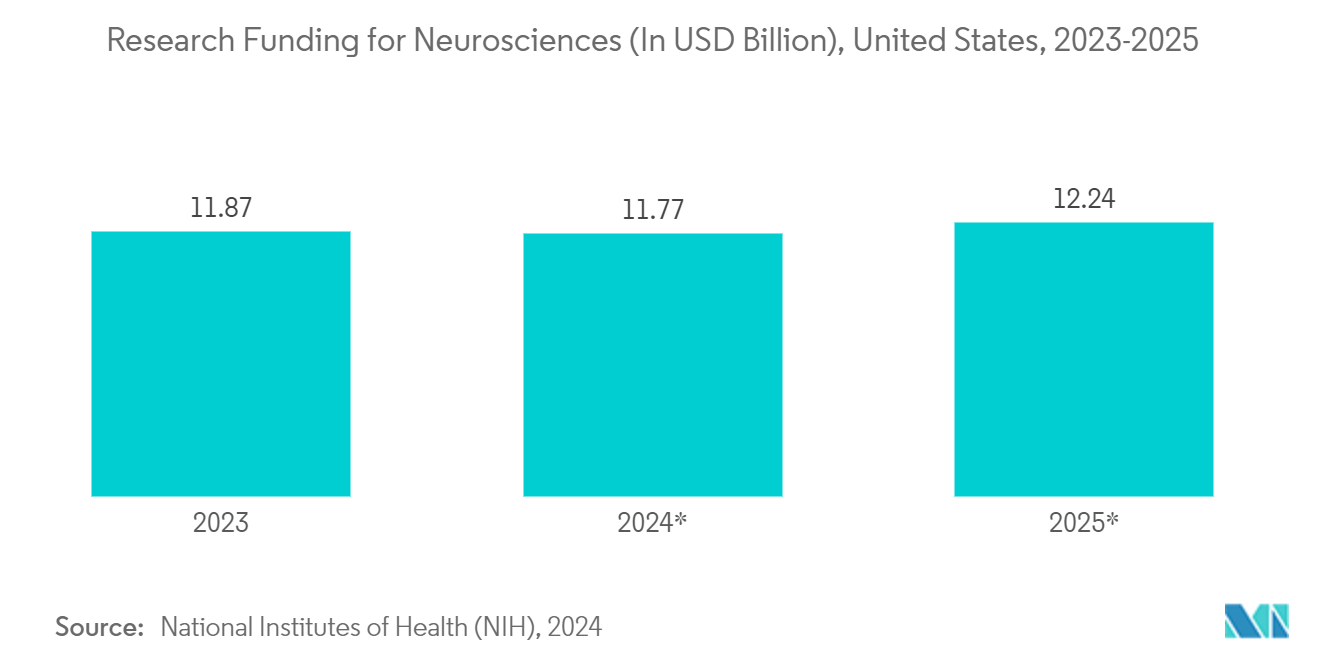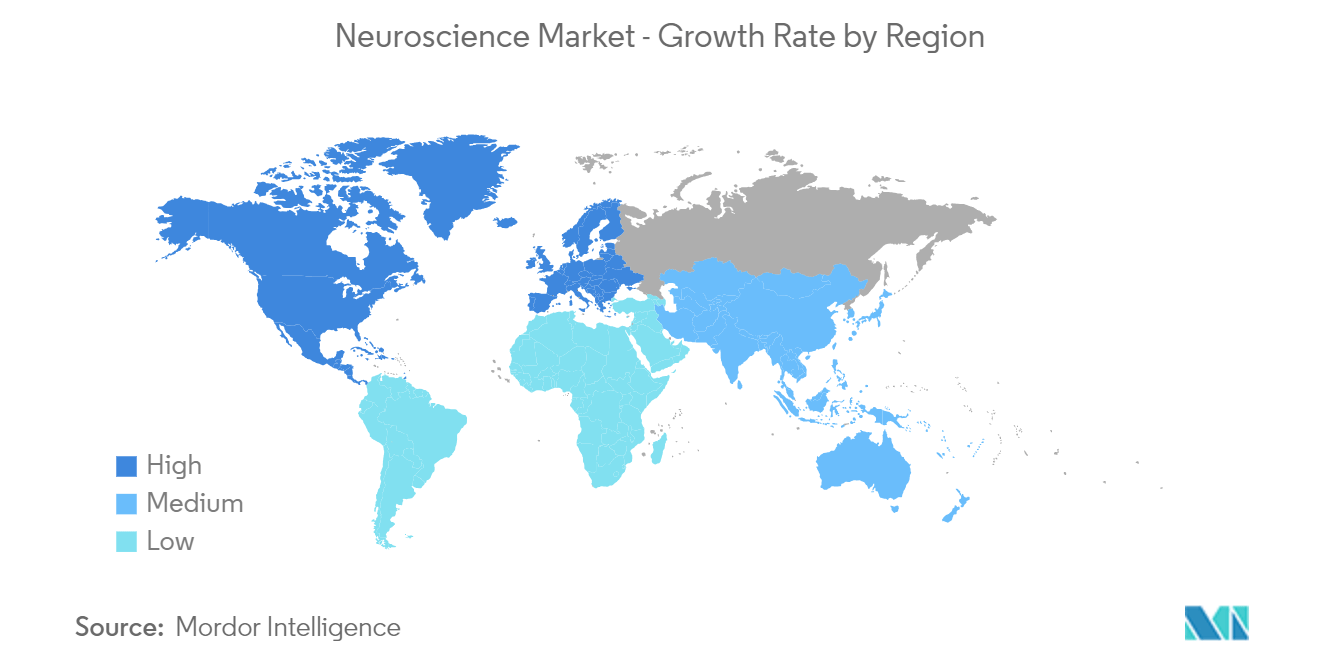Market Trends of Global Neuroscience Industry
Brain Imaging is Expected to Hold a Significant Share in the Neuroscience Market During the Forecast Period
Brain imaging is expected to hold a significant market share by technology during the forecast period. Magnetic resonance imaging (MRI) is considered the best tool for diagnostic imaging and neuroscience research. It provides morphological images with the highest spatial resolution, unmatched soft tissue contrast, and unique functional information about the central nervous system (CNS). For instance, according to the data published by the University of California in December 2023, the ultra-high resolution imaging scanner enables researchers to investigate changes in brain circuitry associated with various disorders. These include degenerative diseases, schizophrenia, and developmental disorders such as autism spectrum disorder. Therefore, developments in brain imaging focused on improving cognition and improving brain functions will likely drive the market during the study period.
Moreover, the increasing focus on research and development is leading to the development of effective neurofeedback systems, thereby contributing to market growth. For instance, as per the National Institute for Health and Care Research (NIHR) Maudsley Biomedical Research Centre in 2022, the Medical Research Council invested GBP 1.3 million (USD 1.58 million) for a larger trial with 100 children with attention deficit hyperactivity disorder (ADHD). This will compare MRI-neurofeedback to a placebo unrelated to their brain activity. The work also led to new collaborations locally and with the National Institute of Mental Health and Dresden University. The team has since secured funding (approximately GBP 2 million (USD 2.43 million) from NIHR, Action Medical Research) to trial other brain-based therapies in ADHD, including different types of non-invasive brain stimulation treatments such as transcranial direct current stimulation and stimulation of the trigeminal nerve, which is responsible for sensations in the face.
Due to the high acceptance of MRI, market players continuously focus on product approvals and launches, propelling the segment's growth. For instance, in February 2024, Royal Philips launched its Smart Quant Neuro 3D, marking a significant leap in objective decision support for diagnosing and evaluating therapies for brain disorders such as multiple sclerosis (MS), traumatic brain injury (TBI), and dementia. The cutting-edge Smart Quant Neuro 3D technology automatically measures various brain tissues, bolstering decision-making in brain disease management, tracking disease progression, and monitoring therapeutic effects. Therefore, all these factors, such as increasing focus on research and development and new product launches, are expected to drive the overall segment growth.

North America is Expected to Witness Healthy Growth During the Forecast Period
North America is expected to hold a significant share during the forecast period. The major factors contributing to the growth of the market are the rise in funding for various research regarding neurodegenerative diseases, the increase in neurological disorders prevalence and awareness, the rising geriatric population, and the presence of key market players. For instance, according to data from the Alzheimer’s Association 2024 report, as the risk of dementia escalates with age, the number and percentage of Americans affected by Alzheimer's and other dementias is set to rise. Projections indicate that the United States population aged 65 and older will expand from 58 million in 2022 to 82 million by 2050. Thus, owing to such a high burden of neurological diseases is expected to propel the demand for neuroscience technology.
Also, the growing research findings on brain injury are expected to increase the need for neuroscience technology devices, which is expected to drive market growth in the region. For instance, in June 2024, Brain Canada, in collaboration with the Brain Changes Initiative (BCI), planned to allocate USD 1.1 million through the "Innovation Grants for Research Impact in Traumatic Brain Injury" program. This funding aims to bolster brain injury research and enhance brain health across Canada. Therefore, the market is expected to grow in North America during the forecast period due to the above-mentioned factors, such as increasing neurological disorders and growing research funding.


